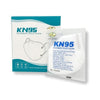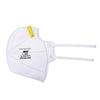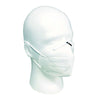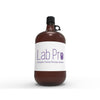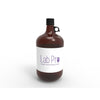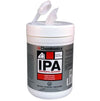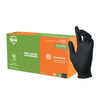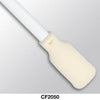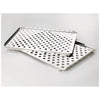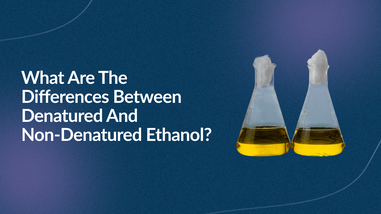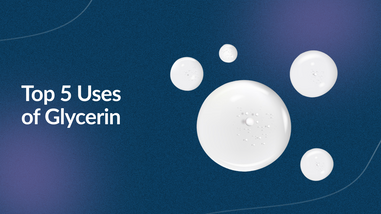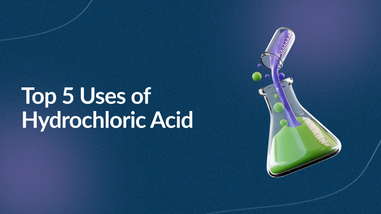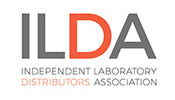- No products in the cart.
Every Fourth of July, skies across America light up with dazzling bursts of color, sparkle, and sound. But behind each spectacular firework is a carefully choreographed chemical performance—an explosive symphony of science. At Lab Pro, we supply many of the components used in research labs that help understand and create these phenomena. So, in celebration of Independence Day, let’s break down the fascinating chemistry behind fireworks: from the chemical compounds that create vibrant colors to the precise reactions that launch and explode these pyrotechnic wonders.
The Anatomy of a Firework
A standard aerial firework (like the kind used in professional shows) is typically a shell packed with various chemical components. The key parts include:
-
Lifting Charge – usually black powder, it launches the shell into the sky.
-
Time-Delay Fuse – controls the explosion's timing.
-
Bursting Charge – ignites the internal contents at peak altitude.
-
Stars – small pellets that contain the color-producing chemicals and metal salts.
Each of these elements plays a crucial role in the performance, but the real magic lies in the chemistry of the stars.
Color Chemistry: What Makes Fireworks So Colorful?
The vibrant hues of fireworks are created by metal salts and metal oxides, which emit different colors when they are heated and excited in a flame. Here's a breakdown of the most common color-producing compounds:
| Color | Chemical Compound | Element |
|---|---|---|
| Red | Strontium carbonate (SrCO₃) | Strontium |
| Orange | Calcium chloride (CaCl₂) | Calcium |
| Yellow | Sodium nitrate (NaNO₃) | Sodium |
| Green | Barium chloride (BaCl₂) | Barium |
| Blue | Copper chloride (CuCl₂) | Copper |
| Purple | Strontium + Copper compounds | Strontium + Copper |
| White/Silver | Aluminum or Magnesium powder | Aluminum/Magnesium |
Each metal emits light at a characteristic wavelength when burned. For example, copper burns blue, while strontium burns red. Mixing different compounds—or adjusting their ratios—can create blended colors like peach, pink, or even turquoise.
Explosions in Action: The Chemistry of Fire and Heat
To create the visual effect, fireworks must reach high temperatures to excite the electrons in these metal salts. This heat comes from an oxidation-reduction (redox) reaction.
Most fireworks use black powder—a mix of potassium nitrate (KNO₃), charcoal (carbon), and sulfur—as both the lifting and bursting charge. When ignited, this mixture undergoes a rapid exothermic reaction, producing:
-
Gases (mainly CO₂ and nitrogen) – which create thrust
-
Heat – needed to excite the metal salts and produce light
-
Pressure – which helps scatter the stars outward into intricate patterns
The reaction looks like this:
The combustion products expand rapidly, propelling the firework into the air and then scattering the stars to paint the sky with color.

Pattern Formation: Science Meets Art
Beyond just color, fireworks are designed to explode in specific shapes—like peonies, chrysanthemums, willows, or even smiley faces. These shapes are created by the arrangement of stars inside the firework shell. The timing of ignition and the shell’s orientation play a major role in producing consistent, recognizable patterns.
This aspect combines chemistry with physics and engineering. For example:
-
Shell symmetry determines how evenly the stars are spread.
-
Time fuses delay ignition to coordinate different bursts.
-
Multi-break shells can create layered or sequential effects.
Fun Facts About Fireworks and Chemistry
-
Blue is the hardest color to make in fireworks. It requires just the right amount of copper and an exact temperature—too hot, and the blue turns white!
-
Chinese alchemists discovered the original form of black powder around the 9th century. It was made by accident while searching for an elixir of immortality.
-
Firework sound effects—like crackling or whistling—come from different particle sizes and compounds like titanium or organic salts, not just the explosion itself.
-
NASA uses similar pyrotechnic principles in its spacecraft separation charges.
-
The smell of fireworks—that signature smoky sulfuric scent—is the result of the combustion byproducts like sulfur dioxide and potassium compounds.
Safety and Sustainability in Firework Chemistry
While fireworks are beautiful, they also come with environmental and safety concerns. Combustion releases particulates and heavy metals into the air, which can affect air and water quality.
Scientists are now researching "green fireworks"—pyrotechnics that reduce smoke and eliminate toxic metals like perchlorates. These sustainable fireworks use nitrogen-rich fuels and clean-burning oxidizers, offering safer options without sacrificing brilliance.
The Lab Pro Connection
At Lab Pro, we understand the science that drives innovation—and celebration. Whether you're in a research lab developing pyrotechnics, analyzing metal salts, or studying combustion reactions, our lab-grade chemicals, PPE, and equipment support your work with precision and safety.
As we light up the skies this Fourth of July, let’s remember the scientific brilliance behind the sparkle. Chemistry has never looked so festive!
Happy Independence Day from all of us at Lab Pro!
Stay safe. Stay curious. And enjoy the show.
For over 45 years, Lab Pro Inc. is your steadfast source for premium lab supplies, hand tools, lab equipment, chemicals, and PPE apparel. Trusted by aerospace industries, medical device companies, and laboratories globally, we epitomize exceptional quality in every product. Experience the convenience of next day service in California. Contact us online or at 888-452-2776 to explore solutions tailor-made for the laboratory industry. Elevate your experiments with Lab Pro Inc. – your partner in precision and excellence.

